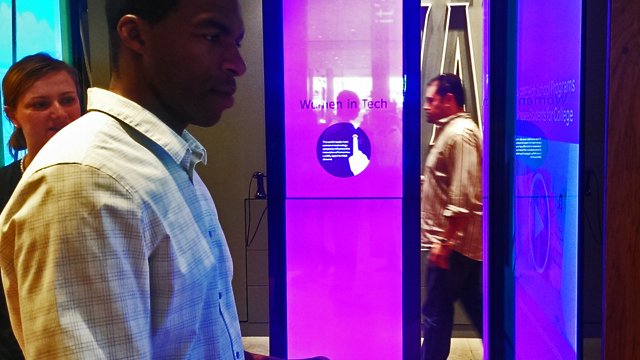
The Internet of Everything has changed the retail landscape when it comes to the customer experience. With the variety of information available to retail employees, they not only need it to be analyzed, but need to put it into action. One of the principal endpoint solutions being utilized across that landscape is digital signage. It can be tailored and set to whatever the operator chooses, and more importantly can change depending on the customer viewing the display.
Cisco, which coined the term IoE, projects today that the 13 billion connections that exist today in the IoE will grow to 50 billion by the end of the decade, meaning more real-time data will be available to any particular vertical looking to analyze and act on it. The company also conducted a survey testing 19 shopping concepts on consumers that provided a brief overview of how open consumers were to IoE concepts. The study found the use cases tested would provide $312 million in total gross annual value opportunity (15.6 percent improvement in profitability) for a hypothetical $20 billion retailer.
The number of endpoint solutions available to retailers combined with the IoE can help retailers make more informed decisions to tailor the customer experience — and the strongest customer-facing tool in a retailer’s arsenal is digital signage, given it can be tailored in real-time to maximize profits. According to the International Data Corp., the use of digital signage in retail outlets will grow from $6 billion in 2013 to $27.5 billion in 2018 for a 35.7 percent five-year compound annual growth rate, showing the importance brand outlets place on digital signage and their interactive capabilities.
While there are a number of options to tailor the customer experience with the use of digital signage once prospective shoppers are in the store, another challenge is getting them in the store. According to Industry Weapon, 76 percent of consumers have entered a site because the sign was interesting, while an additional 75 percent of consumers have told friends about a store simply because they were impressed by the signage. Finally, 68 percent of Americans made purchases of a product or service because of the appealing nature of the digital signage.
Some of the technologies that interact with digital signage through the IoE to deliver the tailored customer experience expected include integrated camera and beacon technologies.
With its deployment, digital signage can tailor offers to a particular customer based on past purchases and preferences. As mentioned before, heat-mapping technology can inform digital signage to upsell items based on high-traffic areas or push out high-inventory items to ensure as much is sold as possible. Beacon technology is a proximity-based communication solution conducted via Bluetooth that allows retailers to offer customers discounts and product information that can be displayed through digital signage.
Interactive signage solutions take engagement to a whole new level – intuitive touchscreen navigation can provide customers with relevant and personalized content, the ability to check inventory, or speak with an associate via video conferencing, as well as wayfinding information around the store. Other interactive aspects include the ability to obtain and use customer demographics to assist in clothing recommendations on the screen for them to see.
Smart mirror technology brings another level of engagement to the retail environment. It can scan a customer’s face at the cosmetics counter for skin composition, resulting in the best options tailored to them. With interactive capabilities that act as a dedicated beauty advisor, it can diagnose skin details and log them daily to see how a user’s skin has changed over time, making recommendations accordingly.
All of the above can help expand on the positive growth digital signage has created for retail chains over recent years. According to InfoTrends, digital signage has increased brand awareness by 47.7 percent, purchase amount by 29.5 percent, sales volumes by 31.8 percent, repeat buyers by 32.8 percent, and in-store traffic by 32.8 percent. Retailers that continue to increase investments in display technology will only see those numbers increase.
Read the original post at Retailcustomerexperience.com
